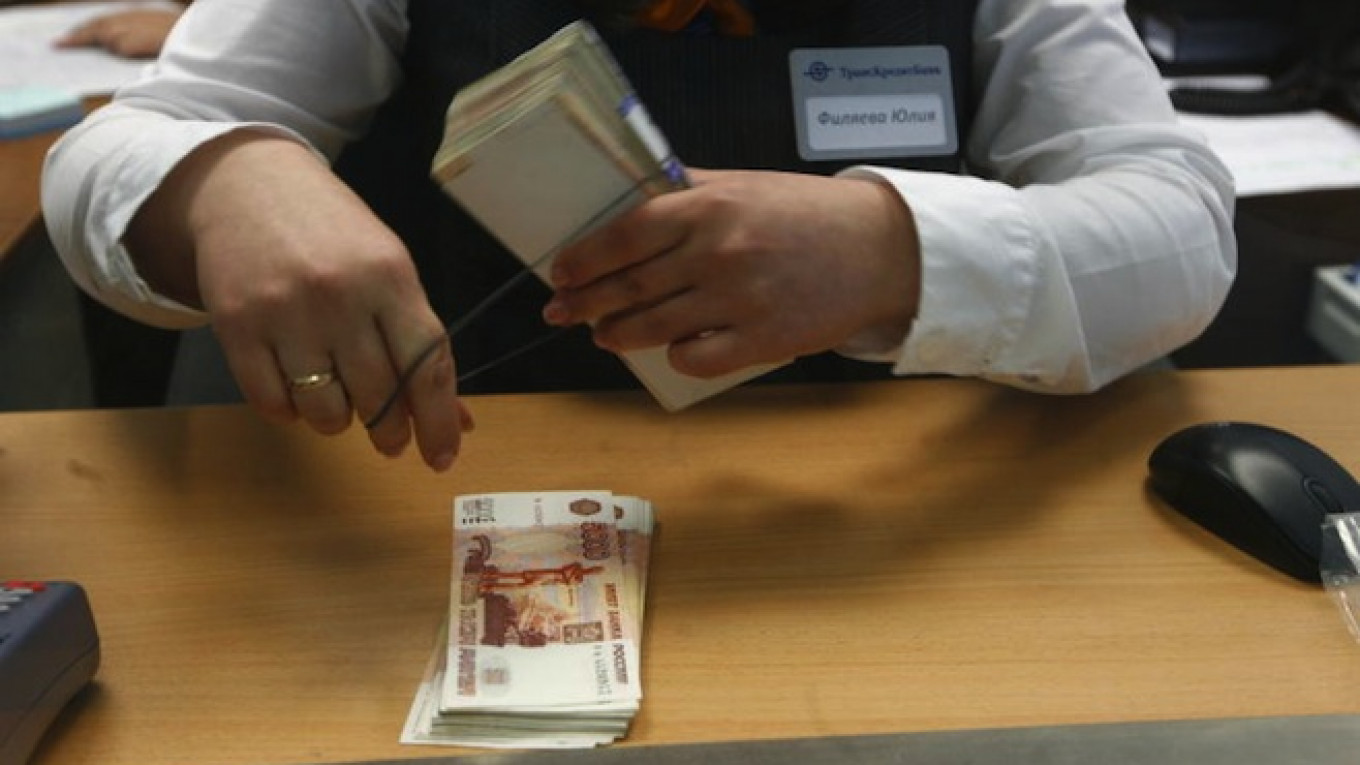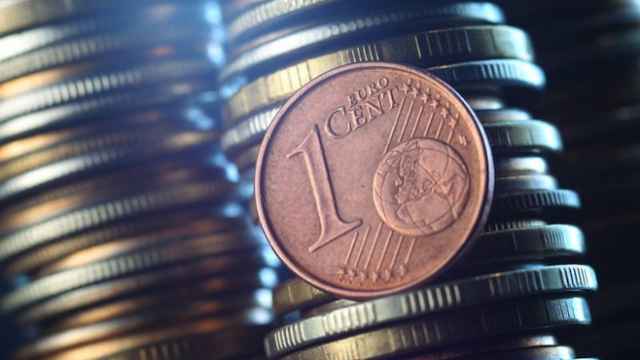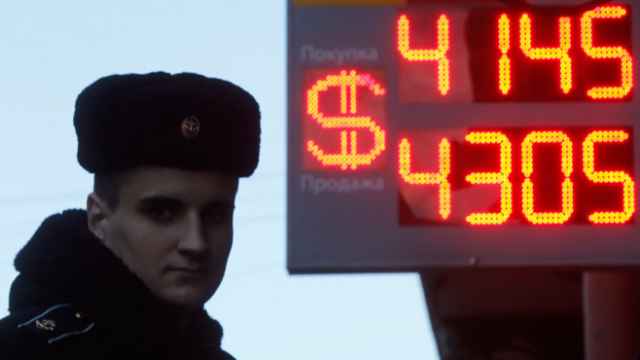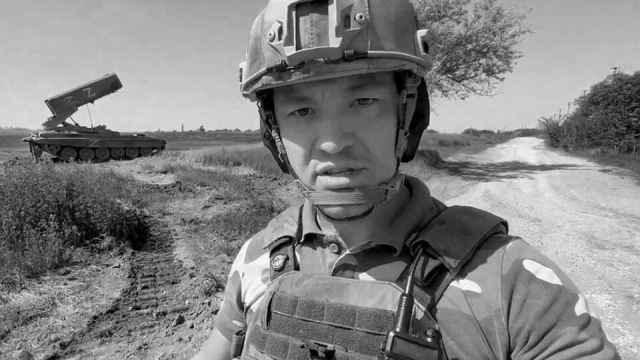The Russian currency tumbled Wednesday as the Central Bank announced a major step toward a free floating exchange rate, reversing a policy of managing ruble volatility through market interventions that has been in place for 15 years.
The ruble plunged shortly after markets opened following two days of national holidays and passed the psychologically important 45-to-the-dollar mark for the first time in history during early evening trading.
Announcing it would spend no more than $350 million a day in defense of the currency, the Central Bank said in a statement Wednesday: "The ruble exchange rate will be determined predominantly by market factors." Previously there was no upper limit to the bank's interventions.
“The old framework has been torn up,” Neil Shearing, chief economist at Capital Economics, said in a note Wednesday.
The ruble pared losses Wednesday afternoon but dropped rapidly again in the evening, crashing past the 56-to-the-euro mark for the second time in one day and trading down more than 2 percent against the greenback on the previous day's close.
"The market clearly wants to test the Central Bank's resolve," Tim Ash, head of emerging market research at Standard Bank, said in a note to investors.
Multi-Pronged Support
The ruble's collapse has gathered pace in recent weeks amid falling oil prices and the ongoing effect of Western sanctions on Moscow — but was slowed by Central Bank interventions of about $30 billion during October alone.
Economists and traders warned that while the bank's pull-back would likely be a positive move for the ruble over the long term, it would not necessarily shield the currency from further declines.
“We do not view this as a clear ruble positive,” said Tom Levinson, chief currency strategist at Sberbank CIB.
One of the world's worst performing currencies this year, the ruble weakened 28.5 percent since January. It shed 12.7 percent of its value in October alone.
External pressures on the ruble show little sign of easing. Global oil prices dropped to new four-year lows Wednesday while tensions in Ukraine appear to be growing after the Kremlin's recognition of Sunday elections in rebel-controlled territory in the east of the former Soviet country prompted an angry response from Kiev.
The Central Bank's move toward a free float, which officials have promised will be fully implemented by 2015, appeared to be part of multi-pronged strategy to support the ruble.
The regulator hiked interest rates by 1.5 percent Friday, and said Wednesday that it would introduce a new 12-month foreign exchange repo auctions, with the first expected to be held within three weeks.
“As long as other conditions remain the same, the market should stabilize toward the end of the year,” the Central Bank's first deputy chairwoman, Ksenia Yudayeva, said Wednesday, Interfax reported.
Former Finance Minister Alexei Kudrin wrote Wednesday on Twitter that the ruble was “near equilibrium” and that he did not expect the Central Bank's move to prompt fresh falls.
Financial Stability
The policy of controlling the exchange rate has been a fixture of Russian monetary policy since Vladimir Putin first became Russian president.
The Central Bank re-implemented exchange rate manipulation in 1999, a year after a traumatic default and months of financial turbulence forced it to abandon its defense of the currency when U.S. dollar reserves simply ran out.
The Central Bank stuck to its principle during the 2008 financial when it burned through about $200 billion. This year, the Central Bank has spent more than $60 billion.
While the cap on spending foreign currency reserves is a significant step toward a fully free floating ruble, the Central Bank stressed it reserved the right to intervene on the market if financial stability was under threat. The bank also said it would formally preserve the ruble's trading corridor, the band within which the regulator seeks to keep the ruble.
The shift to a completely free-floating currency was not implemented immediately because of the risks of causing a run on the ruble, ING Bank's chief Russian economist Dmitry Polevoy said Wednesday.
“Any words in the general media on 'no corridor and no interventions' would see risks of household panic and unnecessary demand for currency,” Polevoy wrote in a note to investors.
Contact the author at h.amos@imedia.ru







